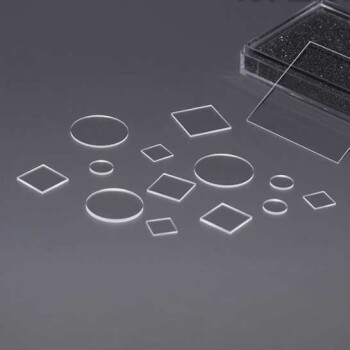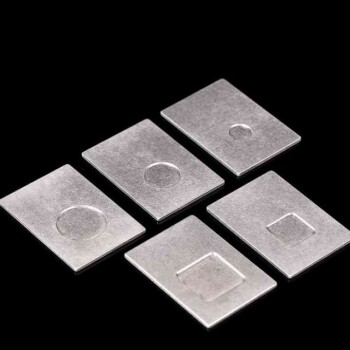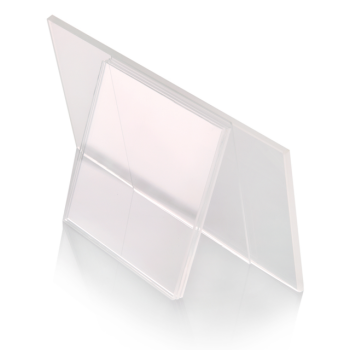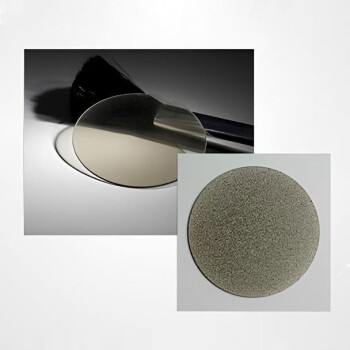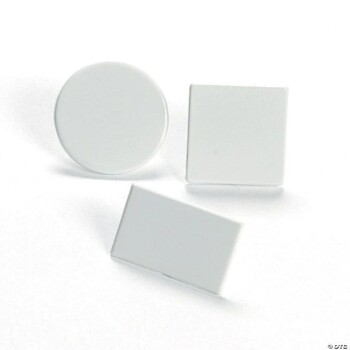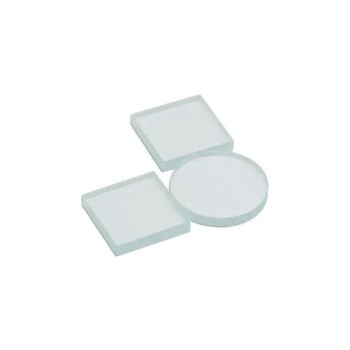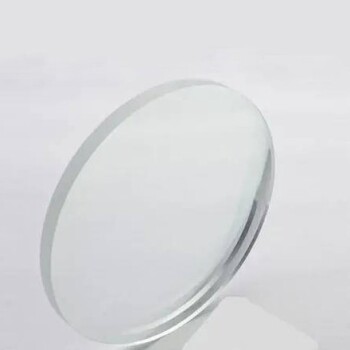용융 실리카 소개
정의 및 구성
실리콘 산화물의 한 형태인 용융 실리카는 비정질 구조와 높은 순도로 인해 두드러집니다. 원자가 규칙적으로 배열된 결정질 석영과 달리 용융 실리카는 비결정질로, 원자가 무작위적이고 무질서하게 배열되어 있습니다. 이 독특한 구조는 주로 뛰어난 특성의 원인이 됩니다.
용융 실리카는 거의 순수한 이산화규소(SiO₂)로 구성되어 있으며, 미량 불순물은 일반적으로 50ppm 미만입니다. 이러한 높은 순도는 우수한 열적, 광학적, 기계적 특성에 매우 중요합니다. 상당한 불순물이 없기 때문에 용융 실리카는 광범위한 온도와 환경에서 안정성을 유지할 수 있어 다양한 하이테크 애플리케이션에서 선호되는 소재입니다.
용융 실리카의 제조 공정에는 고순도 석영 또는 천연 실리카 모래를 일반적으로 섭씨 1,700~2,000도의 매우 높은 온도에서 녹이는 과정이 포함됩니다. 이 용융 과정에서 결정 구조가 제거되어 유리와 같은 균질한 소재가 만들어집니다. 용융 후 소재는 빠르게 냉각되어 비정질 상태를 유지하므로 최종 제품이 고유한 특성을 유지할 수 있습니다.
요약하면, 용융 실리카의 구성과 제조 공정은 물리적, 화학적 특성을 정의할 뿐만 아니라 첨단 기술 응용 분야에서의 다목적성과 중요성을 강조합니다.
기존 유리와의 차별성
용융 실리카는 순도와 추가 성분이 없다는 점에서 기존 유리와 차별화됩니다. 특정 특성을 향상시키거나 제조 공정을 용이하게 하기 위해 다양한 첨가제가 포함된 기존 유리와 달리 용융 실리카는 거의 전적으로 이산화규소(SiO₂)로만 만들어집니다. 이러한 고순도는 우수한 열적 및 광학적 특성의 초석입니다.
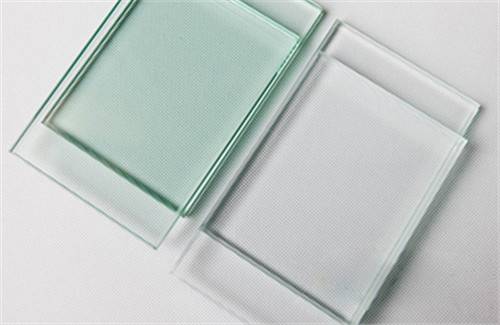
열적 특성 측면에서 용융 실리카는 열팽창 계수가 매우 낮기 때문에 온도 변화에 따라 팽창과 수축이 거의 일어나지 않습니다. 따라서 극저온부터 극한의 열까지 광범위한 온도 범위에서 매우 안정적입니다. 반면에 기존 유리는 일반적으로 열팽창 계수가 높아 열 스트레스에 더 취약하고 극한 조건에서 고장이 발생할 가능성이 높습니다.
광학적으로 용융 실리카는 자외선(UV), 가시광선, 적외선(IR) 스펙트럼에 걸쳐 투명성이 뛰어난 것으로 잘 알려져 있습니다. 이러한 광범위한 투명성은 순도가 높고 빛을 산란시키거나 흡수할 수 있는 불순물이 없기 때문입니다. 기존 유리, 심지어 고품질 광학 유리도 특정 파장, 특히 자외선 및 적외선 범위의 투명도를 제한하는 요소가 포함되어 있는 경우가 많습니다.
아래 표는 용융 실리카와 기존 유리의 몇 가지 주요 차이점을 강조합니다:
| 속성 | 용융 실리카 | 기존 유리 |
|---|---|---|
| 구성 | 거의 전적으로 SiO₂ | 다양한 첨가제 함유 |
| 열팽창 계수 | 매우 낮음 | 높음 |
| 투명도 | 광범위한 자외선부터 적외선까지 | 첨가제에 의한 제한 |
| 내화학성 | 높은 내성 | 구성에 따라 다름 |
| 전기 절연 | 우수 | 가변적 |
이러한 특성으로 인해 용융 실리카는 항공우주, 반도체 및 광학 산업과 같이 높은 열 안정성과 광범위한 스펙트럼의 광학 투명성이 요구되는 분야에 이상적인 소재입니다.
용융 실리카의 특성
화학적 특성
용융 실리카는 뛰어난 화학적 불활성과 고순도로 잘 알려져 있으며, 이러한 특성으로 인해 광범위한 화학 물질에 대한 저항성이 뛰어납니다. 이러한 특성은 실험실, 산업 환경 및 첨단 제조 공정과 같이 화학물질 노출이 불가피한 환경에서 특히 중요합니다. 일반적인 저항성에도 불구하고 용융 실리카가 모든 물질에 영향을 받지 않는 것은 아닙니다. 수산화칼륨과 불산에 대한 취약성이 두드러지게 나타나며, 장기간 노출 시 구조적 무결성이 저하될 수 있습니다.
다른 소재와 비교하여 용융 실리카의 내화학성을 강조한 다음 표를 참고하세요:
| 화학 화합물 | 용융 실리카 내성 | 기존 유리 내성 |
|---|---|---|
| 수산화칼륨 | 취약 | 민감성 |
| 불화 수소산 | 민감성 | 민감성 |
| 황산 | 내성 | 내성 |
| 염산 | 내성 | 저항성 |
| 수산화나트륨 | 내성 | 저항성 |
이 비교 분석은 용융 실리카의 독특한 화학적 견고성을 강조하여 화학적 안정성이 가장 중요한 응용 분야에서 선호되는 소재임을 보여줍니다. 그러나 특정 화학물질에 대한 취약성으로 인해 이러한 물질이 널리 사용되는 환경에서는 신중한 취급과 적절한 보호 조치가 필요합니다.
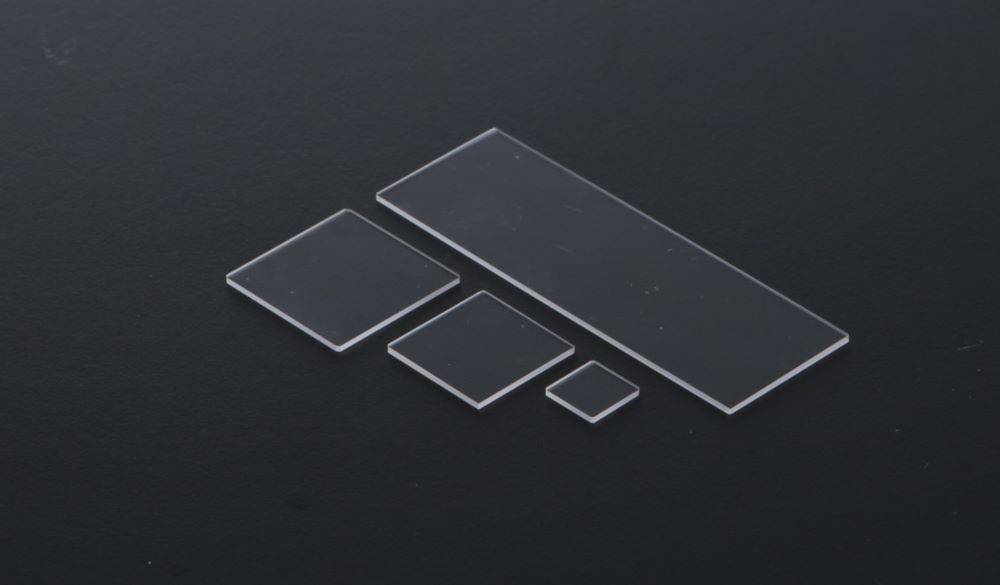
전기적 성능
용융 실리카는 매우 높은 저항을 특징으로 하는 뛰어난 전기 절연 특성으로 잘 알려져 있습니다. 이러한 특성 덕분에 고주파 성능이 필요한 애플리케이션에 특히 적합합니다. 다양한 조건에서 전기 절연성을 유지하는 이 소재의 능력은 기존 소재가 실패할 수 있는 환경에서 매우 중요합니다.
예를 들어 전자 및 통신 분야에서는 마이크로파 및 밀리미터파 주파수에서 작동하는 부품을 제조할 때 용융 실리카를 사용하는 경우가 많습니다. 높은 저항은 고주파 전송의 무결성과 효율성을 유지하는 데 필수적인 신호 손실을 최소화합니다.
| 속성 | 가치 | 영향 |
|---|---|---|
| 전기 절연 | 높은 저항 | 고주파 애플리케이션에서 신호 손실 최소화 |
| 주파수 범위 | 마이크로파 ~ 밀리미터파 | 첨단 통신 및 전자 제품에 적합 |
| 안정성 | 스트레스 하에서도 절연 유지 | 까다로운 환경에서도 안정적인 성능 보장 |
용융 실리카의 전기적 특성은 고주파 응용 분야에서의 사용 외에도 고온 환경에서의 적합성에도 기여합니다. 극한의 온도를 견디면서 전기 부품을 절연하는 능력 덕분에 항공우주 및 반도체 제조와 같은 산업에서 매우 귀중한 소재입니다.
기계적 특성
용융 실리카는 특히 마이크로 디바이스 영역에서 다른 소재와 차별화되는 뛰어난 기계적 특성으로 잘 알려져 있습니다. 고유의 유연성 덕분에 균열 없이 응력과 변형을 견딜 수 있어 내구성이 가장 중요한 분야에 탁월한 선택이 될 수 있습니다. 이러한 유연성은 뛰어난 강도로 보완되어 용융 실리카는 구조적 무결성을 손상시키지 않고 상당한 기계적 하중을 견딜 수 있습니다.
또한 용융 실리카는 압축에 대한 저항성이 뛰어납니다. 이러한 특성은 미세 유체 장치나 고응력 기계 부품과 같이 재료에 높은 압력이 가해지는 환경에서 매우 중요합니다. 유연성, 강도 및 압축 저항성의 조합으로 용융 실리카는 정밀도와 신뢰성이 타협할 수 없는 마이크로 디바이스 제작에 이상적인 소재입니다.
요약하면, 용융 실리카의 기계적 특성인 유연성, 강도, 내압축성은 다양한 마이크로 디바이스 애플리케이션에 적합하여 성능과 수명을 모두 보장합니다.
광학 특성
용융 실리카는 자외선(UV)에서 적외선(IR) 스펙트럼에 걸쳐 탁월한 투명성으로 잘 알려져 있으며, 이러한 특성은 다양한 광학 애플리케이션에 대한 적합성을 크게 향상시킵니다. 이러한 투명성은 단순히 정도의 문제가 아니라 광학 영역에서 용융 실리카를 다른 재료와 차별화하는 근본적인 특성입니다.
용융 실리카의 광학적 투명성은 특히 다양한 파장대에서의 성능에서 두드러집니다. 예를 들어, 자외선 범위에서 용융 실리카는 160nm까지 빛을 투과할 수 있어 자외선 레이저 및 포토리소그래피와 같은 응용 분야에 없어서는 안 될 필수 요소입니다. 적외선 스펙트럼에서는 3.5µm 이상까지 투과할 수 있어 광섬유, 적외선 분광학 및 열화상 시스템에 매우 중요합니다.

이러한 광범위한 스펙트럼 투명성은 낮은 광학 분산과 높은 굴절률로 보완되어 신호 손실과 왜곡을 최소화합니다. 이러한 특성 덕분에 용융 실리카는 정밀도와 효율성이 가장 중요한 렌즈, 프리즘, 도파관과 같은 광학 부품에 이상적인 소재입니다.
또한 용융 실리카의 기계적 및 열적 안정성은 광학 애플리케이션에서의 사용을 더욱 뒷받침합니다. 열 충격과 기계적 응력에 대한 내성은 용융 실리카로 만든 광학 부품이 고온 환경이나 급격한 온도 변화 등 다양한 조건에서 무결성과 성능을 유지하도록 보장합니다.
요약하면, 넓은 스펙트럼 투명도, 낮은 분산도, 높은 굴절률을 특징으로 하는 용융 실리카의 광학적 특성은 기계적 및 열적 견고성과 결합하여 첨단 광학 기술을 위한 최고의 재료로 자리매김하고 있습니다.
열 성능
용융 실리카는 열팽창 계수가 낮고 일정하기 때문에 뛰어난 열 안정성으로 잘 알려져 있습니다. 이러한 특성 덕분에 용융 실리카는 극저온 조건부터 극한의 열까지 광범위한 온도 범위에서 안정적으로 유지됩니다. 열팽창 계수가 높은 소재와 달리 용융 실리카는 다양한 온도에 노출되어도 치수 변화나 기계적 응력이 크게 발생하지 않으므로 열 내구성이 요구되는 애플리케이션에 이상적입니다.
용융 실리카의 열 안정성은 높은 열전도율과 낮은 열충격 저항성으로 더욱 향상됩니다. 이러한 특성 덕분에 균열이나 변형 없이 급격한 온도 변동을 견딜 수 있습니다. 따라서 용융 실리카는 성능 저하 없이 극한의 조건을 견뎌야 하는 반도체 산업 및 항공우주 분야와 같은 고온 환경에 탁월한 선택이 될 수 있습니다.
또한 용융 실리카의 낮은 열팽창 계수는 첨단 광학 시스템과 전자 부품에서 정밀한 열 관리를 가능하게 합니다. 이러한 응용 분야에서는 다양한 열 조건에서 치수 일관성을 유지하는 것이 최적의 성능과 수명을 보장하는 데 매우 중요합니다. 이러한 열적 특성의 조합으로 인해 용융 실리카는 다양한 고온 및 열에 민감한 응용 분야에서 우수한 소재로 자리매김하고 있습니다.
용융 실리카의 응용 분야
우주 탐사
용융 실리카는 우주 탐사 분야, 특히 우주선 창문과 심해 잠수용 선박의 제작에 중요한 응용 분야를 찾습니다. 용융 실리카의 탁월한 강도는 이러한 환경에서 발생하는 극한의 조건을 견디는 데 이상적인 소재입니다.
우주선 창문에서 용융 실리카는 기계적 응력과 열 충격에 대한 높은 저항성으로 우주 임무 중 발생하는 엄청난 압력과 온도 변동에도 창문의 무결성을 보장합니다. 이 소재는 자외선부터 적외선 스펙트럼에 걸쳐 투명성을 유지하여 왜곡 없이 선명한 관찰과 데이터 수집이 가능하므로 그 활용도가 더욱 높아집니다.
마찬가지로 심해 잠수용 선박에서는 용융 실리카의 뛰어난 내구성이 매우 중요합니다. 이 소재는 심해에서 엄청난 수압을 견딜 수 있어 선박의 관찰창의 안전과 기능을 보장합니다. 이러한 복원력은 혹독한 해양 환경을 고려할 때 필수적인 화학적 부식에 대한 저항성으로 보완됩니다.
이러한 응용 분야에서 용융 실리카의 사용은 다목적성과 견고성을 강조하며 우주 및 수중 탐사 기술 발전의 초석이 되는 소재입니다.
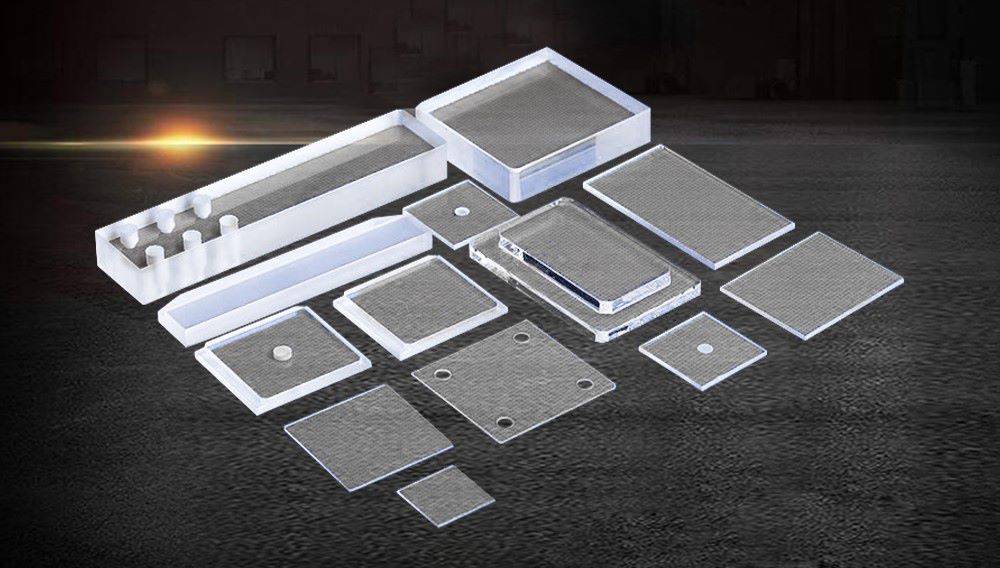
화학 및 의료용 정밀 유리
용융 실리카는 화학적 및 열적 손상에 대한 저항성이 뛰어나 화학 및 의료 분야의 정밀 유리 제품에 이상적인 소재입니다. 이 소재는 화학적 불활성으로 인해 수산화칼륨과 불산을 제외한 대부분의 화학 물질에 영향을 받지 않습니다. 이러한 특성 덕분에 용융 실리카는 구조적 무결성을 손상시키지 않으면서 독성이 강한 화학 물질을 취급하는 용기 및 기기에 탁월한 선택이 될 수 있습니다.
의료 분야에서는 용융 실리카의 열 안정성이 특히 유리합니다. 열팽창 계수가 낮기 때문에 넓은 온도 범위에서 치수 안정성을 유지할 수 있어 고온 멸균 공정이 필요한 분야에 적합합니다. 이러한 특성은 극한의 온도에 반복적으로 노출되어도 성능 저하 없이 견뎌야 하는 의료 기기에 매우 중요합니다.
또한 용융 실리카의 고순도와 광학적 투명성은 의료 진단 및 연구에 유용합니다. 예를 들어, 의료 기기의 정밀 렌즈 및 광학 부품 제조에 사용되어 선명하고 정확한 이미지를 얻을 수 있습니다. 자외선에서 적외선 스펙트럼에 걸쳐 빛을 투과하는 능력 덕분에 레이저 수술 및 광간섭 단층 촬영을 비롯한 다양한 의료 분야에서 귀중한 소재가 될 수 있습니다.
요약하면, 용융 실리카는 내화학성, 열 안정성, 광학적 특성의 조합으로 화학 및 의료 분야에서 정밀 유리 제품을 위한 우수한 소재로 자리매김하고 있습니다. 이러한 고유한 특성은 기기의 내구성과 신뢰성을 향상시킬 뿐만 아니라 중요한 애플리케이션에서 성능과 정확성을 개선하는 데 기여합니다.
전자 및 고온 애플리케이션
용융 실리카는 뛰어난 열 안정성과 단열 특성으로 전자 산업에서 광범위하게 사용되고 있습니다. 부품이 극한의 온도에 노출되는 환경에서 용융 실리카는 전자 기기의 수명과 성능을 보장하는 중요한 재료로 사용됩니다. 열팽창 계수가 낮아 온도 변동이 심한 환경에서도 치수 안정성을 유지할 수 있어 고온 조건에서 작동하는 부품을 단열하는 데 이상적인 선택입니다.
또한 용융 실리카의 전기 절연 특성은 타의 추종을 불허하며 고주파 애플리케이션에 필수적인 높은 저항을 제공합니다. 따라서 신호 무결성을 유지하고 전기 단락을 방지하는 것이 가장 중요한 첨단 전자 시스템 설계에 없어서는 안 될 필수 요소입니다. 절연 기능을 손상시키지 않고 고온을 견디는 이 소재의 능력은 이러한 애플리케이션에서 활용도를 더욱 높여줍니다.
요약하면, 용융 실리카는 열적 특성과 전기적 특성의 독특한 조합으로 인해 전자 제품, 특히 고온 안정성이 중요한 요구 사항인 시나리오에서 필수적인 소재입니다. 이 소재를 사용하면 까다로운 환경에서 전자 부품의 신뢰성과 내구성이 보장되므로 현대 기술 발전에서 그 중요성이 강조됩니다.
광학 및 레이저 기술
용융 실리카는 뛰어난 광학적 특성으로 인해 광학 및 레이저 기술 분야에서 중추적인 역할을 담당하고 있습니다. 자외선(UV)에서 적외선(IR) 스펙트럼에 걸쳐 높은 투명도를 지니고 있어 다양한 광학 부품에 이상적인 소재입니다. 이러한 투명성 덕분에 고정밀 애플리케이션에서 신호 손실을 최소화하고 우수한 성능을 보장합니다.
레이저 광학에서 용융 실리카는 렌즈, 거울, 도파관을 제작하는 데 사용됩니다. 이러한 구성 요소는 레이저 빔의 일관성과 효율성을 유지하는 데 매우 중요합니다. 이 소재의 낮은 분산 특성은 빔 품질 유지가 가장 중요한 고출력 레이저 시스템에 대한 적합성을 더욱 향상시킵니다.
또한 용융 실리카의 기계적 및 열적 안정성은 레이저 기술에서 흔히 발생하는 엄격한 조건을 견딜 수 있게 해줍니다. 열팽창 계수가 낮아 다양한 온도에서도 광학 부품의 치수 안정성을 유지하여 왜곡 및 정렬 불량 위험을 줄여줍니다.
| 속성 | 광학 및 레이저 기술의 이점 |
|---|---|
| 높은 투명성 | 신호 손실 최소화 및 성능 향상 |
| 낮은 분산 | 고출력 시스템에서 빔 품질 유지 |
| 기계적 안정성 | 압축에 강하고 모양 유지 |
| 열 안정성 | 다양한 온도에서 치수 안정성 보장 |
이러한 특성을 종합하면 용융 실리카는 첨단 광학 및 레이저 시스템의 개발과 작동에 없어서는 안 될 소재입니다.
반도체 산업
용융 실리카는 고성능 전자 부품 제조에 필수적인 뛰어난 순도로 인해 반도체 산업에서 높은 가치를 인정받고 있습니다. 용융 실리카의 순도는 오염을 최소화하여 반도체 장치의 신뢰성과 효율성을 향상시킵니다. 이 소재는 포토마스크용 기판과 화학 기상 증착 반응기의 부품 등 반도체 제조 공정의 다양한 핵심 애플리케이션에 사용됩니다.
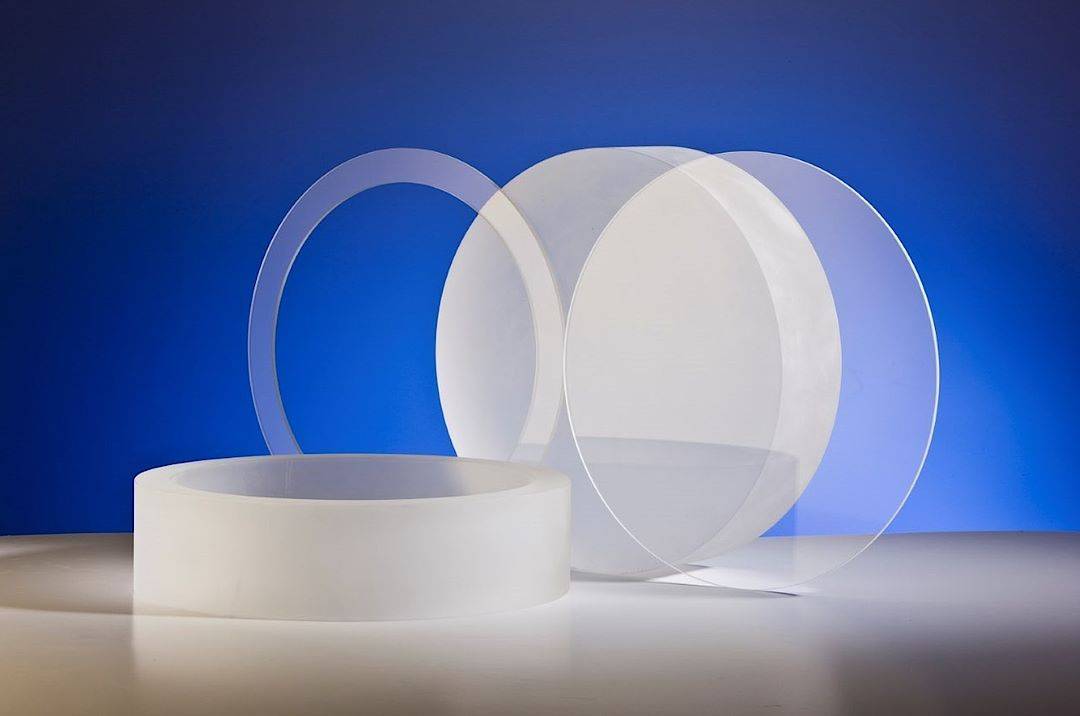
포토마스크의 경우 용융 실리카는 안정적이고 투명한 기판 역할을 하여 반도체 층을 정밀하게 패터닝할 수 있습니다. 자외선에서 적외선 스펙트럼에 걸친 높은 투명성은 고해상도 이미징이 필요한 반도체 제조의 핵심 공정인 포토리소그래피에 특히 유리합니다. 또한 용융 실리카의 낮은 열팽창 계수는 다양한 온도에서 마스크의 치수가 일정하게 유지되도록 하여 반도체 웨이퍼에 전사된 패턴의 정확성을 유지하는 데 필수적입니다.
또한 화학 기상 증착(CVD) 원자로에서 용융 실리카는 열 안정성과 부식성 화학 물질에 대한 내성이 뛰어나기 때문에 사용됩니다. 이러한 특성 덕분에 고온 공정의 가혹한 조건을 견딜 수 있어 웨이퍼 및 집적 회로와 같은 반도체 부품 제조에 이상적인 소재입니다. 용융 실리카의 화학적 불활성, 전기 절연 특성 및 기계적 강도의 조합은 반도체 산업에서 다용도로 활용되는 필수적인 소재입니다.
자외선 위생
용융 실리카는 열과 방사선에 대한 탁월한 내성으로 인해 자외선(UV) 위생 장비에 광범위하게 활용되고 있습니다. 이 소재의 고유한 특성으로 인해 고온과 강렬한 방사선이 만연한 환경에 이상적인 소재입니다. 예를 들어, UV 살균 시스템에서 용융 실리카 성분은 성능 저하 없이 엄격한 조건을 견딜 수 있어 위생 공정의 장기적인 효능을 보장합니다.
이러한 극한 조건에서 용융 실리카의 내구성은 고유한 화학적 및 열적 특성의 직접적인 결과입니다. 기존 소재와 달리 용융 실리카는 UV 애플리케이션에서 흔히 발생하는 문제인 열 스트레스나 방사선 손상이 발생하지 않습니다. 따라서 재료의 무결성이 멸균 상태를 유지하는 데 가장 중요한 중요한 위생 애플리케이션에 안정적이고 지속 가능한 선택이 될 수 있습니다.
또한 용융 실리카는 자외선 스펙트럼에 걸쳐 투명하기 때문에 자외선 위생 분야에서 그 유용성이 더욱 향상됩니다. 이러한 투명성은 멸균 공정에 중요한 자외선을 효율적으로 투과할 수 있게 해줍니다. 따라서 UV 장비의 용융 실리카 성분은 혹독한 작동 조건을 견딜 뿐만 아니라 위생 시스템의 전반적인 효율성과 효과에도 기여합니다.
관련 제품
- 고온 내성 광학 석영 유리 시트
- 적외선 투과 코팅 사파이어 시트 기판 창
- 다양한 연구 응용 분야를 위한 맞춤형 XRD 샘플 홀더
- 광학 창 유리 기판 웨이퍼 석영 판 JGS1 JGS2 JGS3
- 실험실 응용 분야를 위한 CVD 다이아몬드 광학 창


